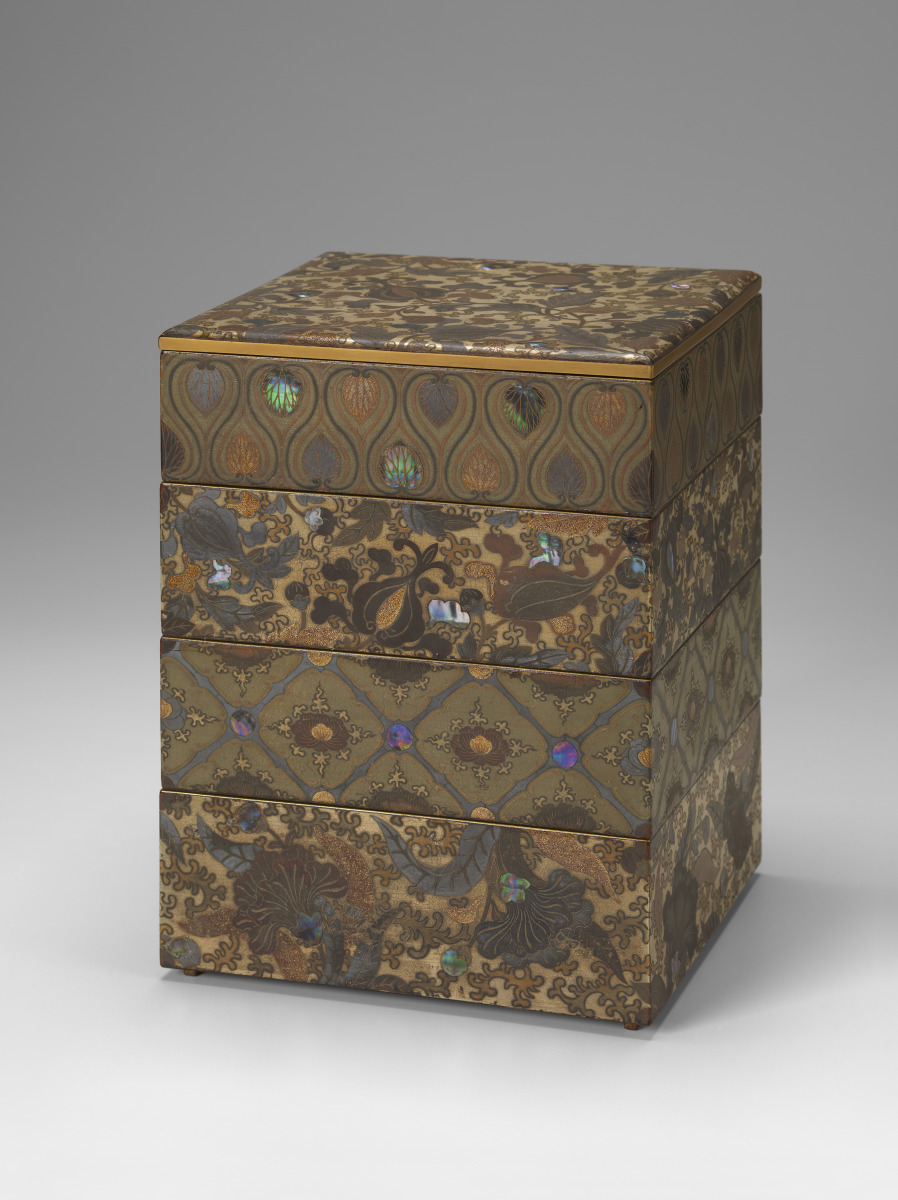
Tiered Box with Floral Textile Design (Translation)
色絵更紗文螺鈿象嵌重箱 江戸时代 (Primary Title)
Unknown (Artist)
This four–tiered box is remarkable for its elegant form, intricate design, and color scheme. Its painted motif is based on a type of cotton fabric with floral patterns (sasara), first brought to Japan from India in the 17th century. Indian cotton textiles continued to flow into Japan through trade ports such as Hirado in Nagasaki. The sarasa pattern was adopted in Japan not only for textiles but also for lacquer, ceramics, and other art objects.
Edo period (1615-1868)
None
None
No inscription on the lacquer box. "箱" (container) and "盖附" (lid included) written in ink on a damaged paper label, pasted on the storage box. See the image (R.2016-7129).
Arthur and Margaret Glasgow Endowment
Image released via Creative Commons CC-BY-NC
Some object records are not complete and do not reflect VMFA's full and current knowledge. VMFA makes routine updates as records are reviewed and enhanced.

